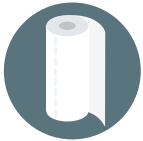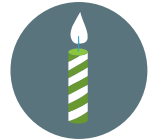Student Lesson Visuals Middle-Elementary- P3
Gain an understanding of learning visuals to help engage students in the lesson process.
- Emergency Management
- Connect360
- PBIS Rewards
- Hall Pass
- Preparation & Response Training
- Behavioral Case Manager
- Visitor Management
-
Compass
Getting Started Webinar Links Data & User Management Compass Curriculum for Students, Staff, & Families Compass Behavior Intervention Compass Mental Health + Prevention Compass for Florida - Character Ed, Resiliency, & Prevention Compass for Texas - Character Ed Analytics & Reporting Release Notes & Updates Additional Resources
- School Check In
- ALICE Training Institute
- Detect
- Anonymous Tip Reporting
- Resources
- Back-to-School
Words are like a tube of toothpaste. If used the right way, toothpaste helps clean our teeth and keep our mouths healthy. Words are the same way. If we use our words to cheer someone up and say nice things, our words can bring joy (health) to another person.
Sometimes we can get sloppy with our toothpaste. It can leak all over the cap and make an annoying mess. Same with our words. Sometimes we aren't careful and little cut-downs or grumbling slip out of our mouths. When we're sloppy with our words, we make little messes. We end up with bad moods and hurt feelings.
What you'll need:
 paper towels
|
 toothpaste toothpaste |
Now, if you squeeze really hard on a tube of toothpaste, all the toothpaste comes squirting out. What a mess that makes! Our words can do the same thing. When you open your mouth and speak hurtful, mean things, you make a huge mess! Have you ever tried shoving toothpaste back into the tube after it has been squirted out? You can't, can you? The same with your words. Once you say those hurtful things, you can't take them back. Saying "sorry" or "I was just kidding" doesn't take the sting of the words away. Long after you have forgotten what you've said, the person you talked mean to will remember it. You can't take it back, just like you can't put toothpaste back in the tube.
Today in one of our classes I introduced the children to two apples (the children didn't know this, but before the class | had repeatedly dropped one of the apples on the floor. You couldn't tell. Both apples looked perfect). We talked about the apples and the children described how both apples looked the same: both were red, were of similar size, and looked juicy enough to eat.
I picked up the apple I'd dropped on the floor and started to tell the children how I disliked this apple, that I thought it was disgusting, it was a horrible color, and the stem was just too short.
What you'll need:
 apple
|
 apple (internally bruised)
|
I told them that because I didn't like it, I didn't want them to like it either, so they should call it names, too. Some children looked at me like I was insane, but we passed the apple around the circle calling it names, "'You're a smelly apple, I don't even know why you exist, 'You've probably got worms inside you,'" etc. We really pulled this poor apple apart. I actually started to feel sorry for the little guy. We then passed another apple around and started to say kind words to it, "'You're a lovely apple,' 'Your skin is beautiful, 'What a beautiful color you are,'" etc. Then we held up both apples, and again, we talked about the similarities and differences, there was no change, both apples still looked the same.
I then cut the apples open. The apple we'd been kind to was clear, fresh and juicy inside. The apple we'd said unkind words to was bruised and all mushy inside. I think there was a light bulb moment for the children immediately. They really got it, what we saw inside that apple, the bruises, the mush and the broken bits, is what is happening inside every one of us when someone mistreats us with their words or actions.
When people are bullied, especially children, they feel horrible inside and sometimes don't show or tell others how they are feeling. If we hadn't have cut that apple open, we would never have known how much pain we had caused it. I shared my own experience of suffering someone's unkind words last week. On the outside I looked OK, I was still smiling. But, on the inside someone had caused me a lot of pain with their words and I was hurting.
Unlike an apple, we have the ability to stop this from happening. We can teach children that it's not ok to say unkind things to each other and discuss how it makes others feel. We can teach our children to stand up for each other and to stop any form of bullying, just as one little girl did today when she refused to say unkind words to the apple. More and more hurt and damage happens inside if nobody does anything to stop the bullying.
What you’ll need:
 small candle
|
 clear plastic cup
|
 matches or lighter
|
- Compare fire and problem behavior with the class (Light the candle)
- Both can be bright and both can hurt
- Explain how problem behavior needs peer attention to keep going just like a candle needs oxygen to stay
- Discuss the many forms of peer attention
- Laughing at someone being picked on
- Watching problem behavior and doing nothing about it
- Explain how taking away peer attention is like taking the oxygen away from the candle (cover the lit candle with the clear glass cup, and watch the flame slowly die out)
- Students can take away peer attention that keeps the problem behavior going by:
- Telling someone teasing you to ”stop”
- Walking away from problem behavior
- Helping another student by saying ”stop” or by walking away from problem behavior with them
- Reporting to P3 Campus